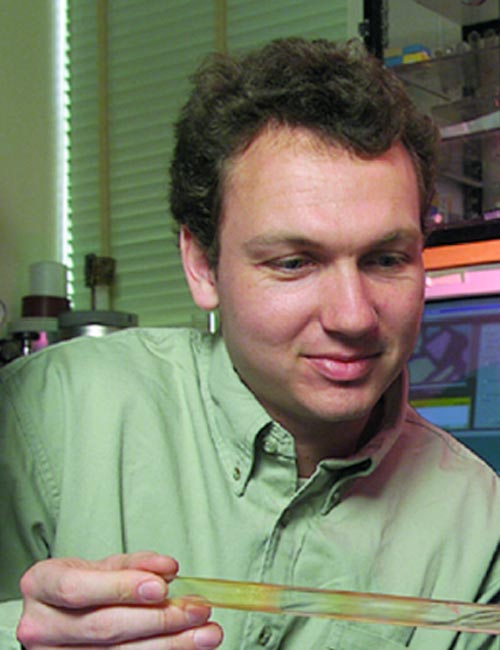How did fellow scientists let him get away with possibly the worst case of physics research fraud known? It deserves a whole book, and Eugenie Samuel Reich is here to help. If you can't sit through a whole book like Plastic Fantastic (out next week), her short version is in Physics World.
The world's first organic electrical laser! The smallest ever transistor!
It's like a late night paid advertisement, except it cost taxpayers millions of dollars - and all Jan Hendrik Schön got was the sack.
Why did the self-correcting nature of science not bring the fraud to light sooner? Some of it is that there are bad scientists, just like in any other occupation, and they are drawn to money and silliness, and some of it is that peer-reviewed journals were not doing their jobs. As book author Gary Taubes, no stranger to ferreting out bad science, said in in an interview here:
I used to joke with my friends in the physics community that if you want to cleanse your discipline of the worst scientists in it, every three or four years, you should have someone publish a bogus paper claiming to make some remarkable new discovery — infinite free energy or ESP, or something suitably cosmic like that. Then you have it published in a legitimate journal ; it shows up on the front page of the New York Times, and within two months, every bad scientist in the field will be working on it.
In 2000 alone, Schön published eight papers in Science and Nature, publications that claim to be the world standard for quality science, and he became known for his breakthrough of using organic dye molecules to create an electric circuit which when prompted by an electric current behaved as a transistor, leading scientists (see Taubes quote above) in a dozen labs to likewise chase some funding, wasting millions of dollars of US government research money. He also garnered the Otto-Klung-Weberbank Prize for Physics in 2001, the Braunschweig Prize in 2001 and the Outstanding Young Investigator Award of the Materials Research Society in 2002.

Jan Hendrik Schön. Credit: Bell Labs
In 2001 his name appeared on a paper an average of every 8 days. That's terrific production, though less so if you just make stuff up. Not everyone bought his schtick, of course. Professor Lydia Sohn of Princeton University noted in his work on single-molecule semiconductors that two experiments carried out at much different temperatures somehow had identical noise but when Nature editors pointed this out to Schön, he said he accidentally submitted the same graph twice. Oh, okay then, good enough for Nature but not good enough for quality scientists and his paper describing the construction of molecular transistors sent his career crashing - two fellow physicists, Julia Hsu and Lynn Loo, attempted to patent research showing that soft lithography could be used to make softer and gentler contact with organic molecules and they used Schön's paper as validation of how cutting-edge their experimental progress was; that's when they stumbled across duplicated data and sounded the alarm.
In this case, the private sector and individual investigators came though for integrity where big media journals did not. In May 2002, Bell Labs/Lucent began an investigation but, surprise, Schön said he kept no laboratory notebooks and his raw-data files had been deleted from his computer because his hard drive just wasn't big enough. Bell Labs fired him, Science withdrew eight papers written by him and the University of Konstanz later revoked his PhD (can they do that? The fraud was after the PhD). Physical Review Journals also withdrew his papers in 2002 as well and finally in 2003 Nature withdrew seven peer-reviewed papers he had written as well.
As Reich writes, "Science was corrected in the Schön case, but not by itself – only because individual scientists made corrections. From would-be replicators in dozens of labs to many sceptics, only a couple of researchers were transformed into whistle-blowers by the unlikely pattern of [duplicated] evidence."Reich continues, "Fraud was able to stifle questions about Schön's lab technique that would otherwise have been asked, and to turn review processes at journals into opportunities for additional fabrication. Other scientists' support of the fraud was unwitting, but the decision to place so much trust in a colleague was a conscious rationalisation that continues to be defended in science to this day."
Article: Eugenie Samuel Reich, 'The rise and fall of a physics fraudster', Physics World, May 1, 2009




Comments